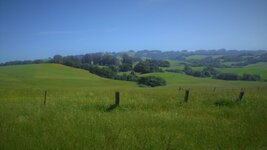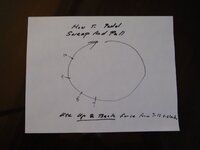Catalyzt
Well-Known Member
- Region
- USA
I'm calling this Rookie Question #4, because I'm sure I've asked at least three previous Rookie Questions.
This one is: On a torque-sensing mid-drive, assuming you are at the highest assistance level possible, do you use less noticeably battery at high cadence, low gear and low speed on steep hills compared to being in high gear, and medium-high cadence, and higher speed on a moderate grade?
Here is why I ask: After I have been grinding up 10-11% grade climbs for a few miles at high cadence and low gear, mostly in HIGH or NORM and in low gear, I am finding that my indicated range drops less than expected in "HIGH."
When I am pushing harder in "HIGH," and going fast on a more moderate grade-- say, winding through mild upgrades on canyon roads, which is a lot of fun-- it seems like the range drops much faster. So I'm trying to avoid doing that on longer rides to preserve range. Is that a good strategy?
The other variable is just what the cycle computer is telling me, which is not accurate. (Shimano E6100.) Its estimates are all over the place. I start out with 92 miles of range for ECO, this drops to 45 miles or something after a 4.5 mile 850 foot climb... but then after descending the other side and plowing through the flat lands with the motor off or on ECO, range for ECO increases to 104 or 105 miles. I understand why the computer does this, but it's really not that helpful! Maybe when I am grinding up those long hills, it simply hasn't yet processed the energy usage of the climb yet.
Thanks! I am planning to push more towards the edge of my range on Monday, pretty sure I'll get home with a decent cushion of range, but wish I really knew how many electrons I was using in what situations.
This one is: On a torque-sensing mid-drive, assuming you are at the highest assistance level possible, do you use less noticeably battery at high cadence, low gear and low speed on steep hills compared to being in high gear, and medium-high cadence, and higher speed on a moderate grade?
Here is why I ask: After I have been grinding up 10-11% grade climbs for a few miles at high cadence and low gear, mostly in HIGH or NORM and in low gear, I am finding that my indicated range drops less than expected in "HIGH."
When I am pushing harder in "HIGH," and going fast on a more moderate grade-- say, winding through mild upgrades on canyon roads, which is a lot of fun-- it seems like the range drops much faster. So I'm trying to avoid doing that on longer rides to preserve range. Is that a good strategy?
The other variable is just what the cycle computer is telling me, which is not accurate. (Shimano E6100.) Its estimates are all over the place. I start out with 92 miles of range for ECO, this drops to 45 miles or something after a 4.5 mile 850 foot climb... but then after descending the other side and plowing through the flat lands with the motor off or on ECO, range for ECO increases to 104 or 105 miles. I understand why the computer does this, but it's really not that helpful! Maybe when I am grinding up those long hills, it simply hasn't yet processed the energy usage of the climb yet.
Thanks! I am planning to push more towards the edge of my range on Monday, pretty sure I'll get home with a decent cushion of range, but wish I really knew how many electrons I was using in what situations.

